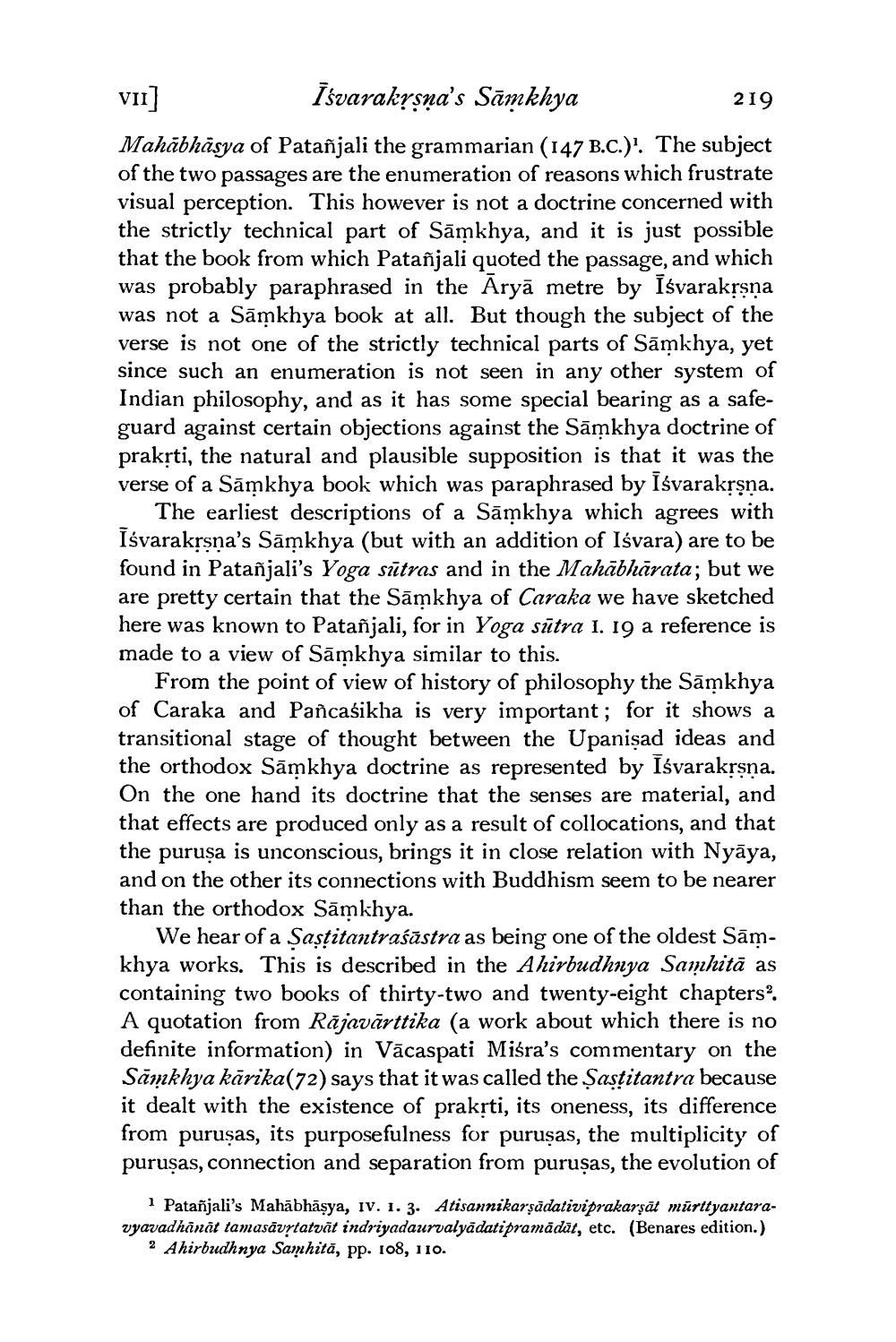________________
VII] īśvarakysna's Sāmkhya
219 Mahābhäsya of Patañjali the grammarian (147 B.C.)'. The subject of the two passages are the enumeration of reasons which frustrate visual perception. This however is not a doctrine concerned with the strictly technical part of Sāmkhya, and it is just possible that the book from which Patañjali quoted the passage, and which was probably paraphrased in the Aryā metre by īśvarakrsna was not a Sāmkhya book at all. But though the subject of the verse is not one of the strictly technical parts of Sāmkhya, yet since such an enumeration is not seen in any other system of Indian philosophy, and as it has some special bearing as a safeguard against certain objections against the Sāmkhya doctrine of prakrti, the natural and plausible supposition is that it was the verse of a Sāmkhya book which was paraphrased by īśvarakrsna.
The earliest descriptions of a Sāmkhya which agrees with īśvarakrsna's Sāmkhya (but with an addition of Iśvara) are to be found in Patañjali's Yoga sutras and in the Mahābhārata; but we are pretty certain that the Sāmkhya of Caraka we have sketched here was known to Patañjali, for in Yoga sūtra 1. 19 a reference is made to a view of Sāmkhya similar to this.
From the point of view of history of philosophy the Sāmkhya of Caraka and Pancaśikha is very important; for it shows a transitional stage of thought between the Upanisad ideas and the orthodox Sāmkhya doctrine as represented by īśvarakrsna. On the one hand its doctrine that the senses are material, and that effects are produced only as a result of collocations, and that the purusa is unconscious, brings it in close relation with Nyāya, and on the other its connections with Buddhism seem to be nearer than the orthodox Sāmkhya.
We hear of a Şastitantraśāstra as being one of the oldest Sāmkhya works. This is described in the Ahirbudhnya Samhitā as containing two books of thirty-two and twenty-eight chapters. A quotation from Räjavārttika (a work about which there is no definite information) in Vācaspati Miśra's commentary on the Samkhya karika(72) says that it was called the Şastitantra because it dealt with the existence of prakrti, its oneness, its difference from puruṣas, its purposefulness for puruṣas, the multiplicity of puruṣas, connection and separation from puruṣas, the evolution of
1 Patañjali's Mahābhāşya, iv. 1. 3. Atisannikarşādativiprakarşāt mürttyantaravyavadhanat tamasävytatvāt indriyadaurvalyādati pramādāt, etc. (Benares edition.)
2 Ahirbudhnya Samhită, pp. 108, 110.




